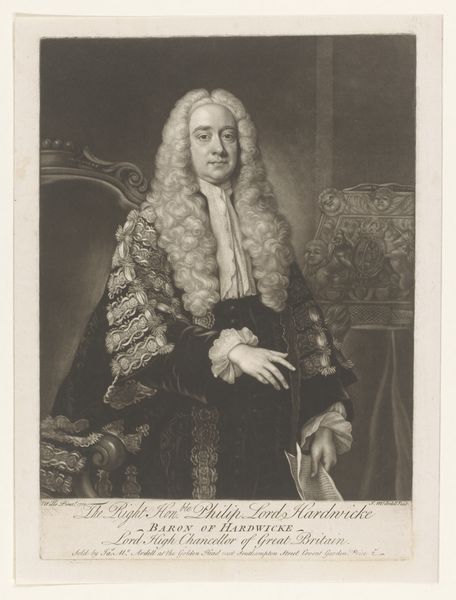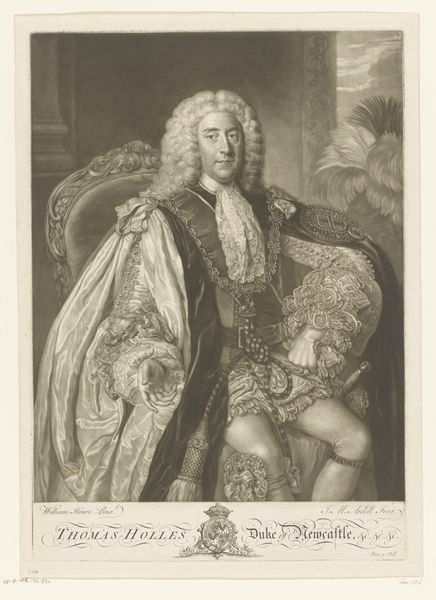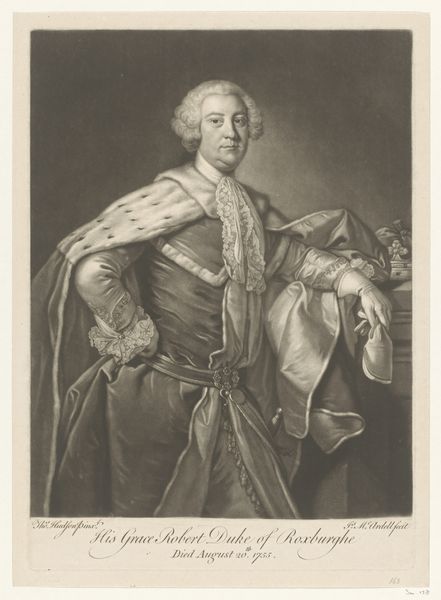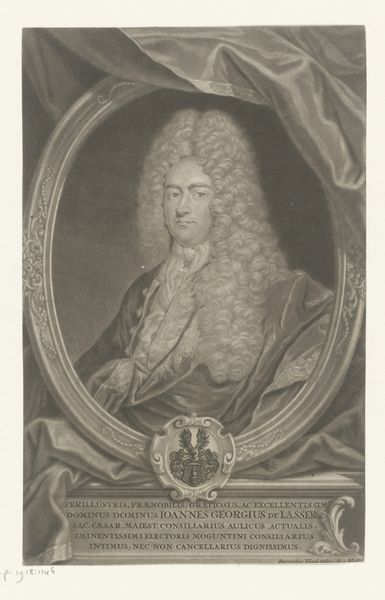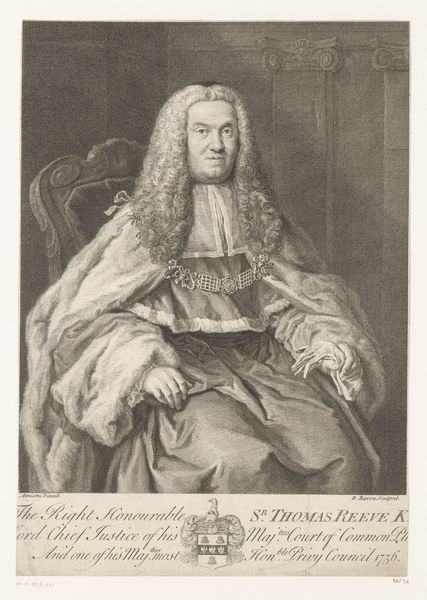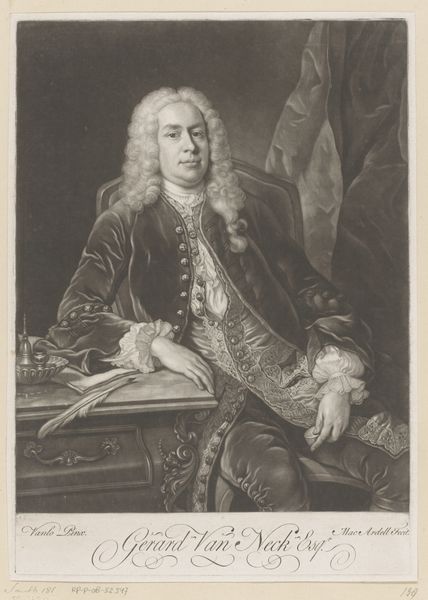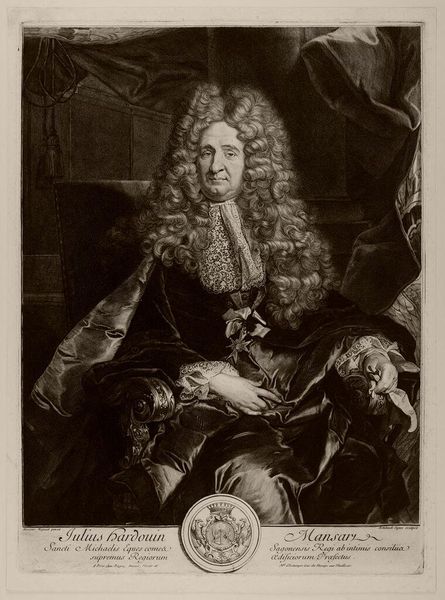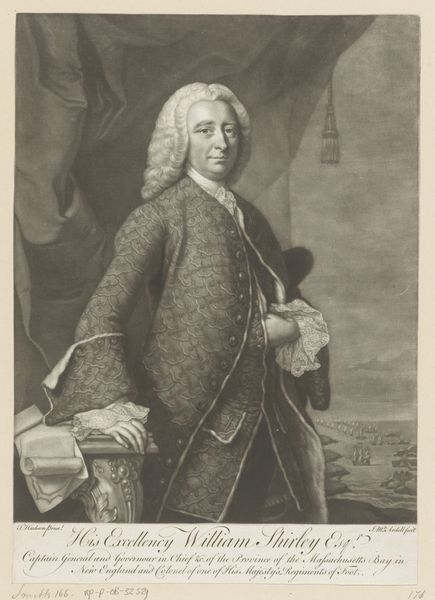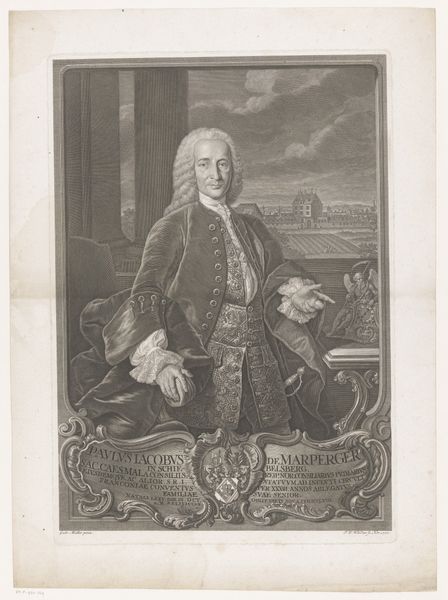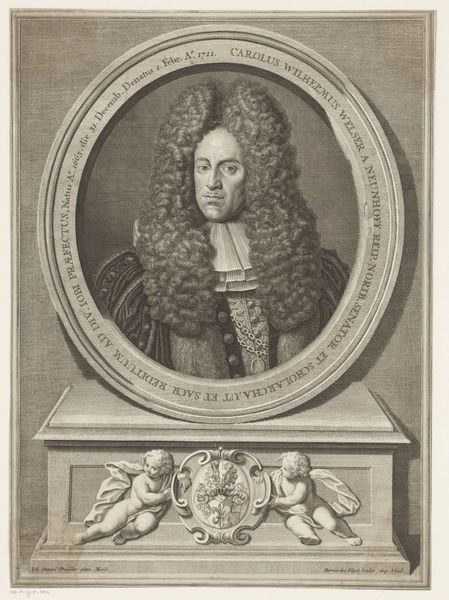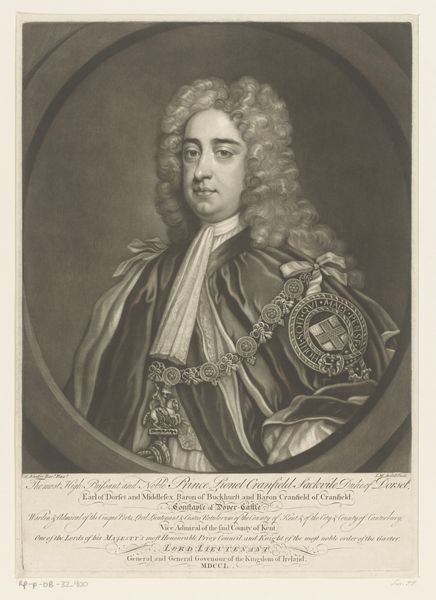
Dimensions: height 396 mm, width 277 mm
Copyright: Rijks Museum: Open Domain
Curator: We are standing before James McArdell’s "Portret van Robert Henley," made sometime between 1760 and 1765. This engraving on laid paper depicts Robert Henley, a prominent 18th-century British politician. Editor: My first thought? That wig! It completely dominates the composition and suggests such rigidity and formality. I'm struck by the elaborate details in the clothing too, and the scroll in his lap… It feels very performative. Curator: It’s important to consider what that performativity signifies. The wig, the robe, the scroll: these aren't just aesthetic choices. They represent Henley’s status, his power as a Lord and a Baron. It speaks to the era’s rigid social hierarchies. Think about how visual representations were intrinsically linked to constructing and reinforcing identity within those power structures. Editor: Precisely. The symbols are layered thick. That elaborate wig, for instance, wasn't just fashionable; it was a marker of class, of profession. The textures – the velvet, the lace, painstakingly rendered in the engraving – all tell a story about wealth and societal role. And he’s presenting something, isn't he? Unfurling authority and influence for all to see through that object he holds in his lap. Curator: The "history-painting" aspects are hard to ignore. Though categorized as a portrait, its visual language references historical narratives—emphasizing legacy and importance. And notice his gaze—almost challenging, or at least supremely confident, directed at the viewer. Editor: It’s the very picture of establishment and the maintenance of a certain order. Even the neutral color scheme amplifies this serious and almost imposing tone. But beneath that seriousness, I can almost feel a person there, which feels like the small success of the portrait. Curator: By examining not just what is depicted, but how and why, we start to understand the complex interplay between art, identity, and power in 18th-century Britain. Editor: I am taking away an acute awareness of just how meticulously curated images were as a language in their own right; social positions solidified through very careful visual cues that persist even centuries later.
Comments
No comments
Be the first to comment and join the conversation on the ultimate creative platform.
